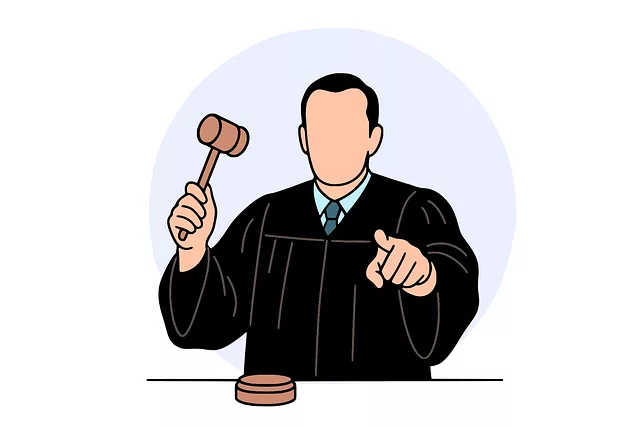Taxi Cab Accidents in Queens: Legal Rights & Strategies for Manhattan Victims

In Queens, taxi cab accidents can result from driver negligence or mechanical defects, with potentia…….
In the bustling metropolis of Manhattan, New York City, medical malpractice cases have emerged as a critical aspect of healthcare governance, shaping the way medical professionals are held accountable for their actions. This comprehensive article delves into the intricacies of medical malpractice within this iconic urban center, exploring its historical roots, legal frameworks, and the far-reaching impact it has on patients, healthcare providers, and the broader community. By examining Manhattan’s unique context, we can gain valuable insights into the challenges and opportunities presented by medical malpractice cases, ultimately contributing to improved patient safety and care.
Definition: Medical malpractice refers to a legal claim against a healthcare provider for failure to exercise the level of skill and care expected in their profession, resulting in harm to a patient. In Manhattan, these cases encompass a wide range of medical errors, misdiagnoses, treatments, and omissions that breach established standards of care.
Core Components: At its heart, a medical malpractice case involves four key elements:
Duty of Care: Healthcare providers owe a duty to their patients to exercise the level of skill and care expected within their profession. This includes obtaining informed consent, providing accurate diagnoses, and implementing appropriate treatment plans.
Breach of Duty: Occurs when a healthcare provider fails to meet the required standard of care. Examples include misinterpreting medical tests, prescribing incorrect medications, or neglecting a patient’s needs.
Causation: The plaintiff must prove that the healthcare provider’s actions or inactions directly caused harm to the patient. This often involves medical expert testimony to establish the causal link.
Damages: Patients who suffer harm due to medical malpractice can seek compensation for their losses, including medical expenses, pain and suffering, and lost wages.
Historical Context: Medical malpractice laws have evolved over centuries, with early legal systems focusing on tort law to address instances of negligence. In the United States, the concept gained prominence in the 20th century, leading to the development of specialized courts and legislation to handle medical malpractice cases. Manhattan, as a hub for healthcare innovation and education, has played a significant role in shaping these legal frameworks, contributing to the establishment of robust patient protection measures.
The influence of medical malpractice cases Manhattan-style extends far beyond the city’s borders, reflecting global trends and concerns within the healthcare industry. Key trends shaping this landscape include:
Rising Healthcare Costs: Medical malpractice lawsuits often result from complex medical procedures with higher risks, contributing to increasing healthcare costs worldwide. This trend has prompted many countries to reevaluate their legal systems and patient safety measures.
Specialization and Complex Cases: The growing complexity of medical practices, especially in specialized fields, presents new challenges for healthcare providers. Manhattan’s reputation as a medical hub attracts patients from around the globe seeking advanced treatments, further emphasizing the need for robust malpractice coverage.
International Legal Harmonization: Recognizing the cross-border nature of healthcare, several countries are working towards harmonizing legal standards and regulations to facilitate international patient travel while ensuring protection against medical malpractice.
The economic implications of medical malpractice cases are multifaceted, influencing both the healthcare sector and the broader economy.
Market Dynamics: Insurance premiums for healthcare providers in Manhattan reflect the city’s unique risk profile. The high cost of living and competitive nature of the healthcare market drive up insurance rates, impacting provider profitability. This, in turn, influences patient charges and overall healthcare accessibility.
Investment Patterns: Medical malpractice insurance is a significant financial consideration for healthcare institutions. Hospitals and clinics invest heavily in risk management strategies to mitigate potential losses from lawsuits. These investments often extend beyond insurance, including legal fees, staff training, and technology upgrades aimed at enhancing patient safety.
Economic System Integration: Medical malpractice cases are integral to the functioning of the local economy. They influence healthcare infrastructure development, insurance market dynamics, and patient behavior. For instance, increased malpractice claims may prompt healthcare providers to adopt new technologies or change practice protocols, ultimately affecting the cost and quality of healthcare services.
Technological innovations play a pivotal role in shaping medical malpractice cases Manhattan and globally. Here are some significant advancements and their impact:
Electronic Health Records (EHRs): The adoption of EHRs has revolutionized patient data management, improving communication between healthcare providers. This technology enhances accuracy in diagnoses and treatments, reducing errors that could lead to malpractice claims.
Telemedicine: With the rise of telemedicine, patients can access specialized care from remote locations. While convenient, this practice requires robust legal frameworks to ensure informed consent and proper patient monitoring, addressing potential malpractice concerns.
Medical Devices and AI: Advanced medical devices and artificial intelligence (AI) systems are transforming diagnostics and treatment planning. However, their use introduces new challenges in terms of accountability and liability, especially when errors occur. Robust regulatory frameworks must keep pace with these technological advancements to address potential malpractice issues.
Manhattan’s legal system plays a critical role in managing medical malpractice cases through robust regulations and specialized courts.
Statutes of Limitations: These laws set time limits on when a plaintiff can file a medical malpractice lawsuit, ensuring cases are resolved within a reasonable timeframe. In New York State, the statute of limitations for medical malpractice is generally two years from the date of injury or one year from the end of continuous treatment, whichever is longer.
Specialized Courts: Manhattan’s legal system includes specialized courts that handle medical malpractice cases, ensuring efficient and fair adjudication. These courts have expertise in complex medical issues and can facilitate settlements or trials more effectively.
Expert Testimony Requirements: Plaintiffs in medical malpractice cases must often present expert testimony to establish the standard of care and breach thereof. This requirement ensures cases are decided based on credible medical evidence, enhancing the integrity of the legal process.
Medical malpractice cases in Manhattan present both challenges and opportunities for healthcare providers and the broader community:
Risk Management: Healthcare providers must implement rigorous risk management strategies to minimize errors and potential malpractice claims. This includes ongoing staff training, quality assurance programs, and adopting evidence-based practices.
Patient Safety Culture: Fostering a strong patient safety culture within medical institutions is essential. By prioritizing patient well-being and encouraging open communication about errors or near-misses, healthcare providers can proactively address issues that might lead to malpractice claims.
Legal Education and Collaboration: Medical professionals can benefit from legal education to better understand their rights and responsibilities in the context of malpractice litigation. Collaboration between healthcare providers and legal experts can help streamline dispute resolution processes, reducing the emotional and financial burden on both parties.
Medical malpractice cases Manhattan-style reflect the intricate interplay between law, technology, economics, and patient safety. Understanding these cases is crucial for creating a more robust healthcare system that protects patients and professionals alike. By recognizing the global implications, embracing technological advancements, and fostering a culture of patient safety, we can work towards minimizing medical errors and enhancing overall healthcare quality.
Through continued research, education, and collaboration between healthcare providers, legal experts, and policymakers, Manhattan and cities worldwide can navigate the complexities of medical malpractice cases, ultimately ensuring that patients receive the highest standard of care while holding healthcare providers accountable for their actions.

In Queens, taxi cab accidents can result from driver negligence or mechanical defects, with potentia…….

In Manhattan, navigating medical malpractice cases requires swift action due to a strict two-year st…….

In Brooklyn and Manhattan, New York City, product defect and medical malpractice lawsuits are preval…….

Construction sites in New York City, especially Manhattan, pose significant risks with high accident…….

Medical malpractice cases in Manhattan require swift action due to short statutes of limitations. An…….

Motorcycle accidents in New York City can result in severe injuries and financial strain, but victim…….

In Brooklyn and Manhattan, product defect lawsuits and medical malpractice cases are crucial for con…….

In New York City, medical malpractice during childbirth can lead to significant harm and legal actio…….

Rideshare Safety Litigation is a growing trend in urban centers like Manhattan, focusing on safety c…….

In The Bronx, understanding trucking liability laws is vital for drivers and individuals affected by…….